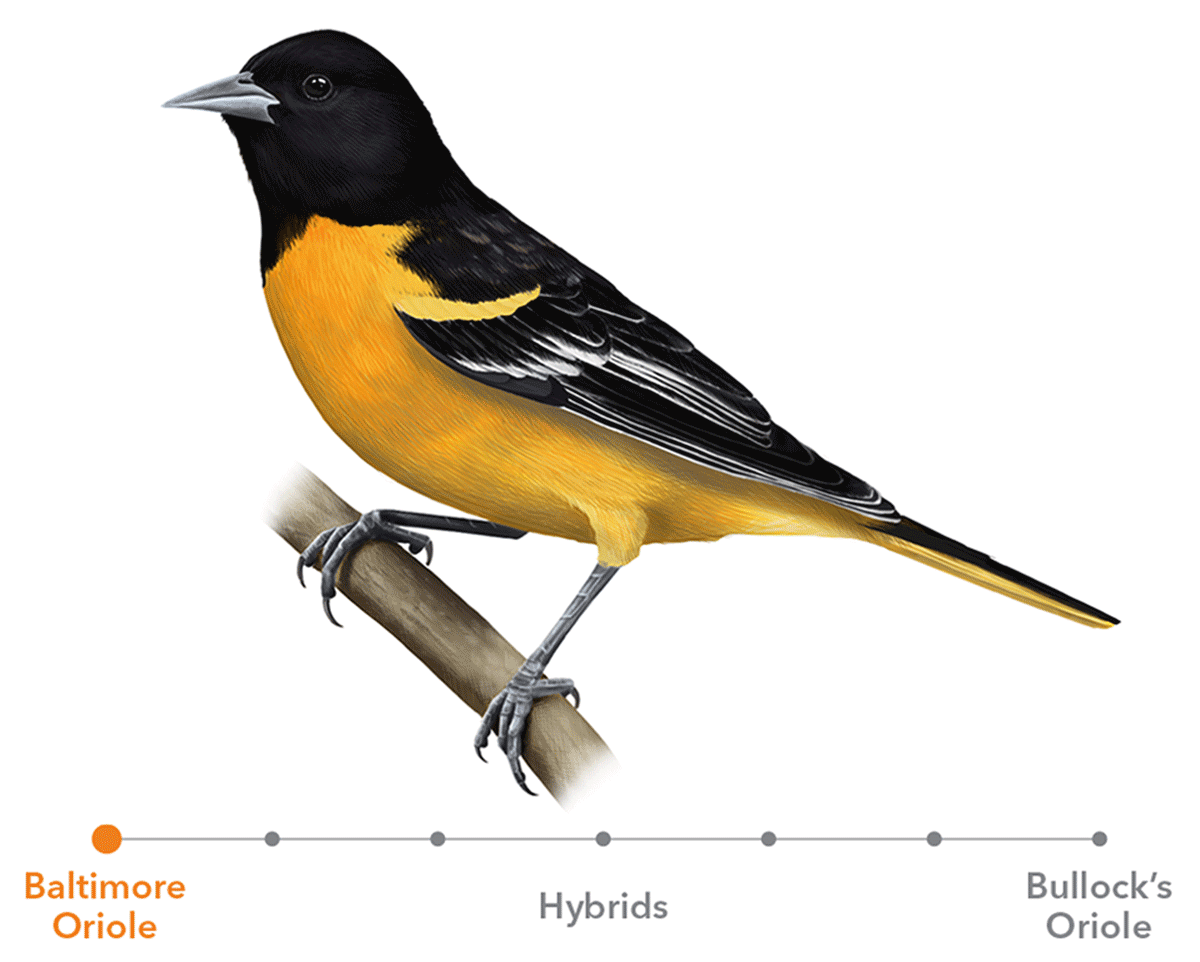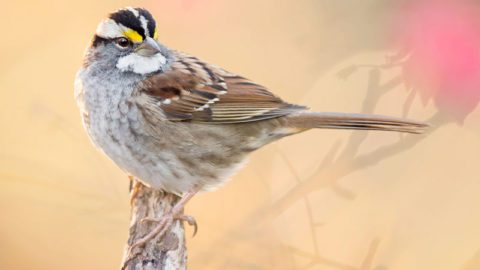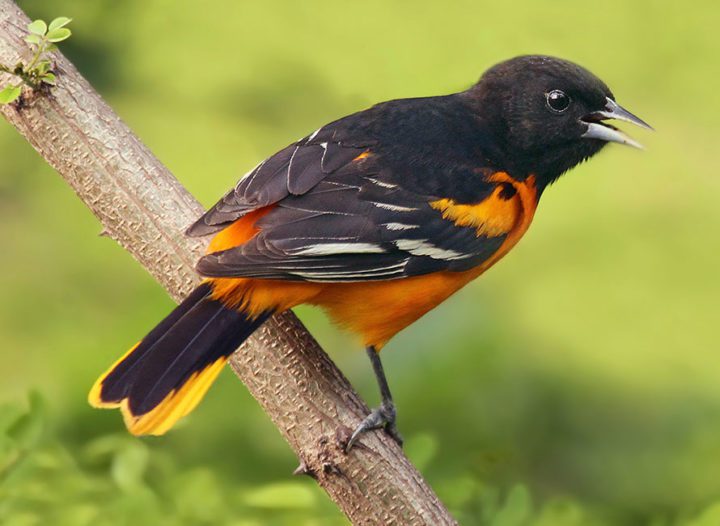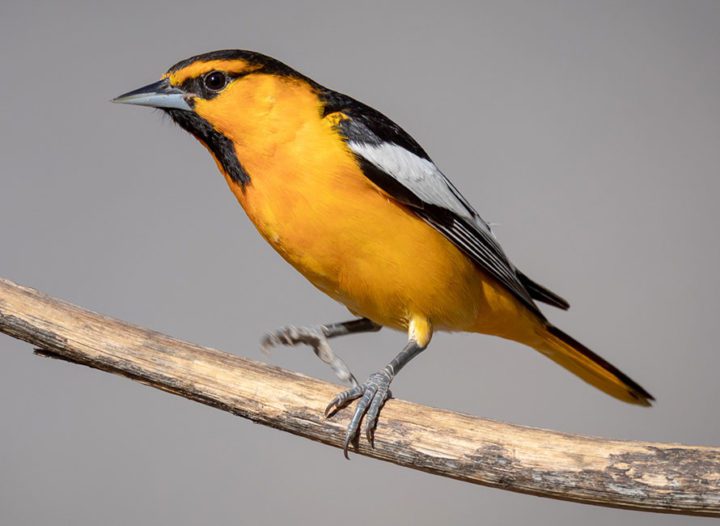One Species or Two? A Winner Emerges in the Great Oriole Debate
By Pat Leonard and Marc Devokaitis
September 9, 2020
From the Autumn 2020 issue of Living Bird magazine. Subscribe now.
Around six decades ago, scientists discovered that Bullock’s Orioles from western North America and Baltimore Orioles from the East interbreed extensively in the Great Plains, where their ranges meet. The revelation prompted ornithologists to lump the two species together under the name Northern Oriole in 1983, much to the consternation of birders and some biologists who felt that these birds were each highly distinct.
Then, just 12 years later, the American Ornithologists’ Union reversed course and split them back into two separate species, in part because new research showed that plenty of “pure” individuals could still be found in the hybrid zone.
But encounters between Baltimore and Bullock’s Orioles in the hybrid zone continue to produce apparently healthy offspring, leading some scientists to wonder if the hybrids might be thriving, reproducing, and expanding their range over time. If so, it would suggest that lumping the species together could have been correct after all.
A new study, published in August in The Auk, should put the “lump/split” debate to rest.
Researchers looked at recent samples from nearly 300 orioles (pure Bullock’s, pure Baltimore, and many hybrids) from along the banks of the Platte River in Nebraska and Colorado (the heart of the hybrid zone). Then they compared their findings to results from genetic research done on birds collected in the 1950s from the same area. The researchers found that, in fact, the oriole hybrid zone has been shrinking, adding to the evidence that Bullock’s and Baltimore Orioles should remain separate species.
The scientists say if hybridization conferred any survival advantage, the zone would have gotten bigger, with more mixing of genes between the parent species, and more hybrids. Instead, ongoing natural selection pressures are limiting the expansion of the hybrid zone and preventing the homogenization of the two species, according to lead author Jennifer Walsh, a postdoctoral researcher at the Cornell Lab.
“I call hybrid zones the ‘supercolliders of speciation,'”says Irby Lovette, a study coauthor and director of the Lab’s Fuller Evolutionary Biology Program. “Through these special matings, genes and traits are mixing and matching in new combinations—all of which helps us learn more about where biodiversity comes from, and therefore how new species arise.”

Baltimore Oriole by Ryan Schain/Macaulay Library. 
Bullock’s Oriole by Robert Gallucci/Macaulay Library.
The orioles are not alone in their flexible mating standards—about 10% of the world’s bird species hybridize. Hybrid zones exist in the U.S. for Black-capped and Carolina Chickadees, Indigo and Lazuli Buntings, and others. But not all hybrid zones are following the same pattern as that of the orioles. For example, Blue-winged and Golden-winged Warblers have hybridized so much they may be moving toward a merger of the two species.
“The debate over whether Bullock’s and Baltimore Orioles are one species or two goes to the very heart of what defines a species,” said Walsh. “For a long time, that definition included the inability of one species to reproduce with any other. Bullock’s and Baltimore Orioles can mate where their ranges overlap in the hybrid zone, but that’s clearly not the whole story.”
Though the scientists feel the one-or-two species matter is probably settled, there are other questions they want to pursue. Their next steps are to identify the specific factors that are limiting oriole hybrid expansion, sequence the entire genome for both Bullock’s and Baltimore Orioles, and determine the specific genes that cause differences in the appearance and behavior of the two orioles.

All About Birds
is a free resource
Available for everyone,
funded by donors like you
American Kestrel by Blair Dudeck / Macaulay Library





